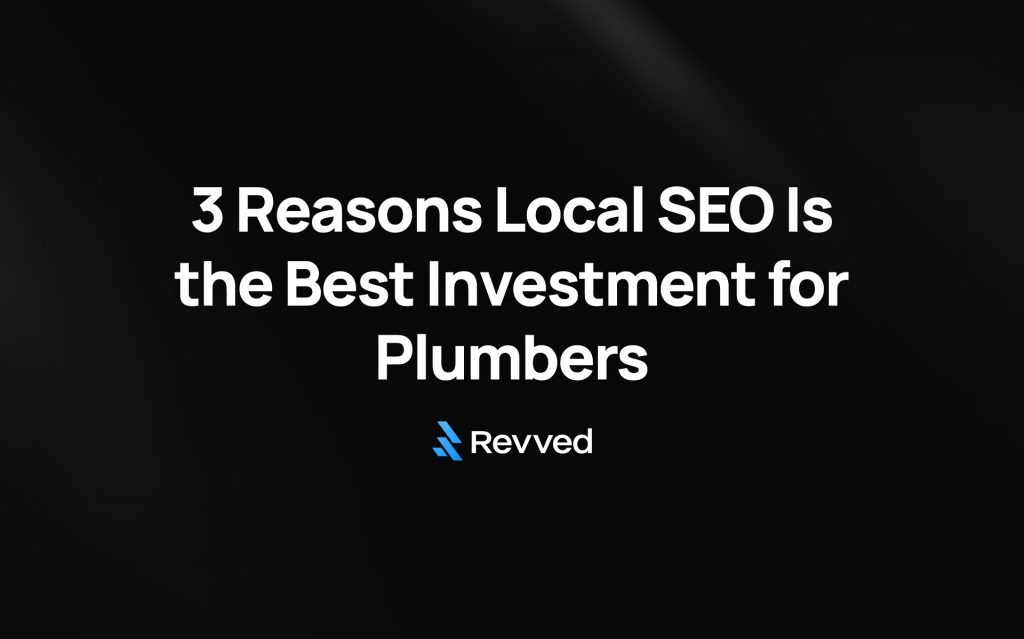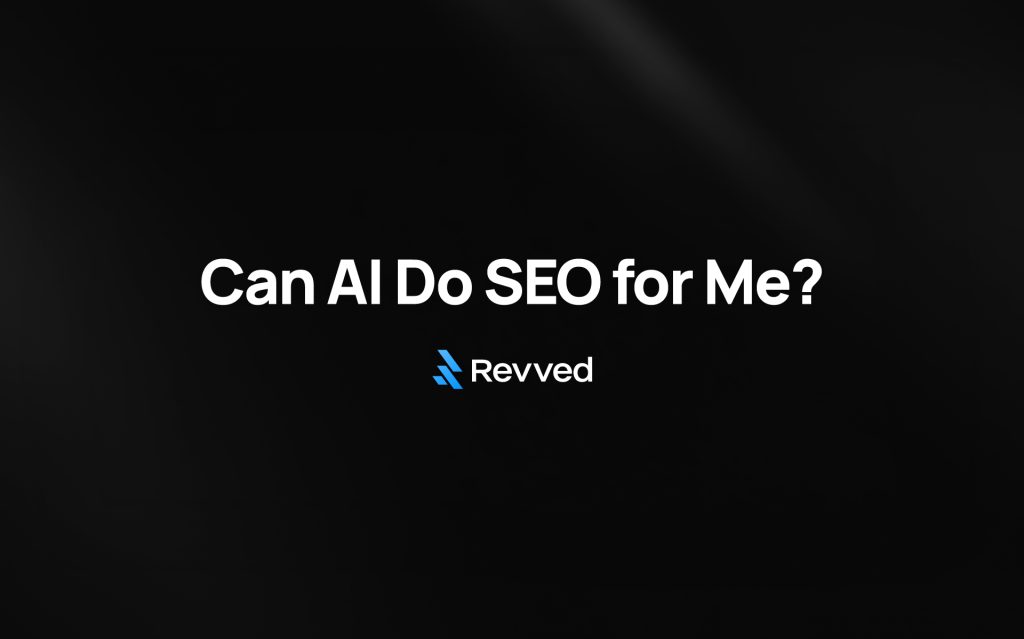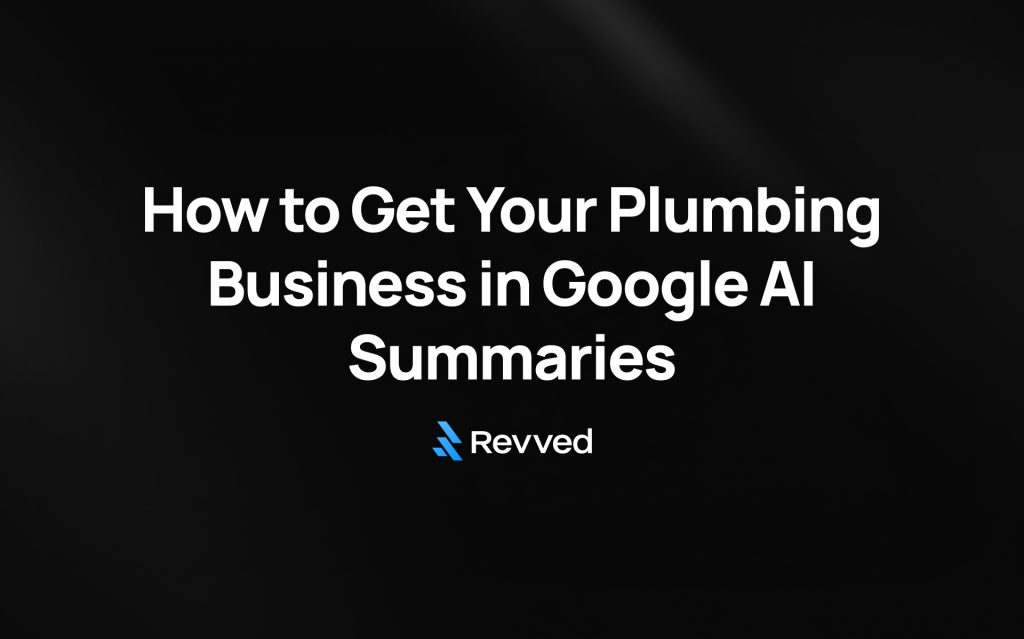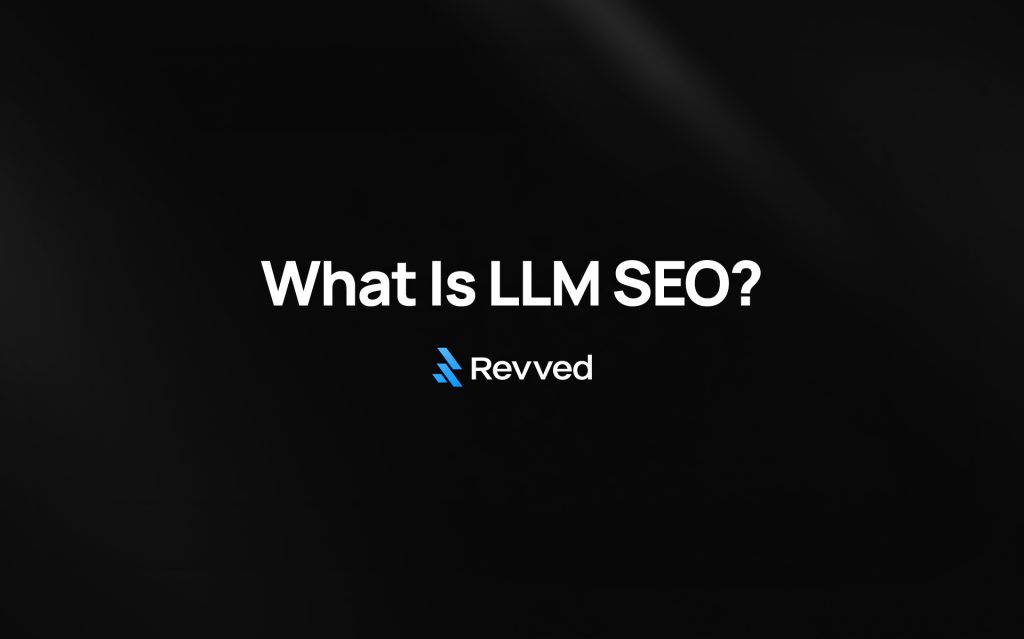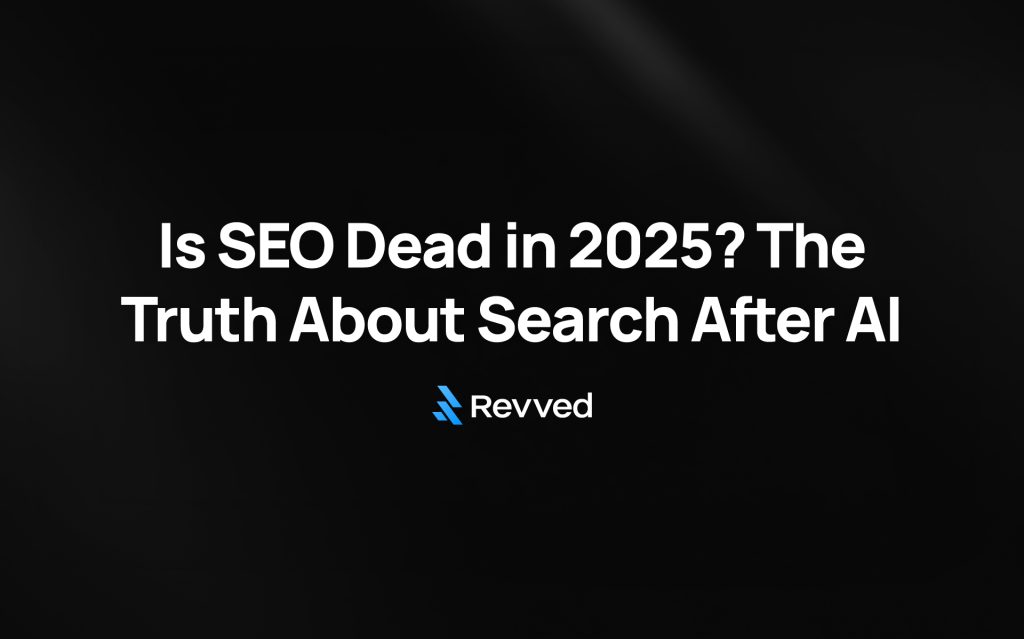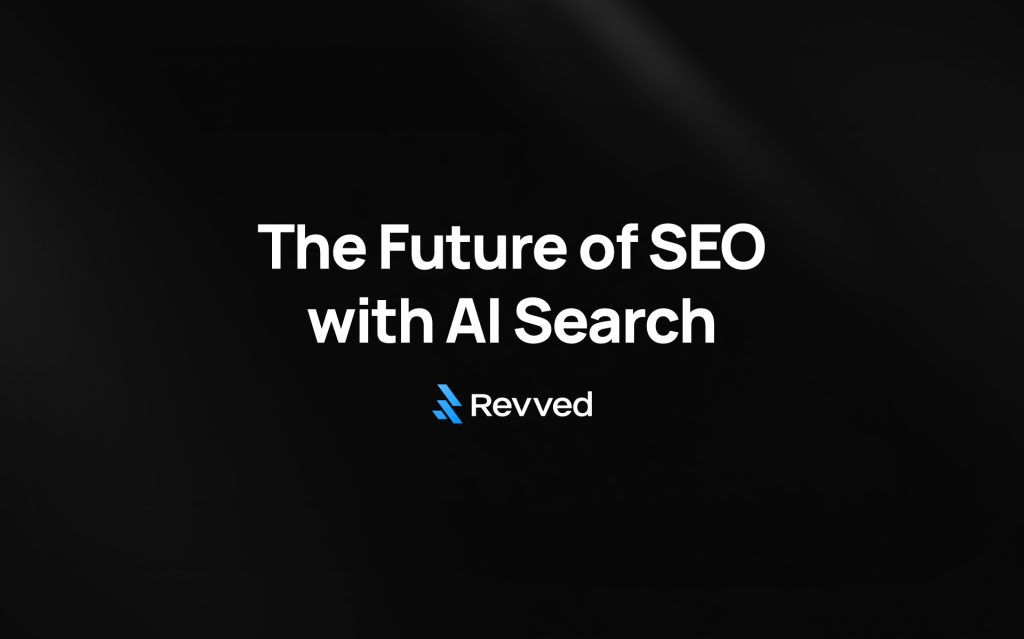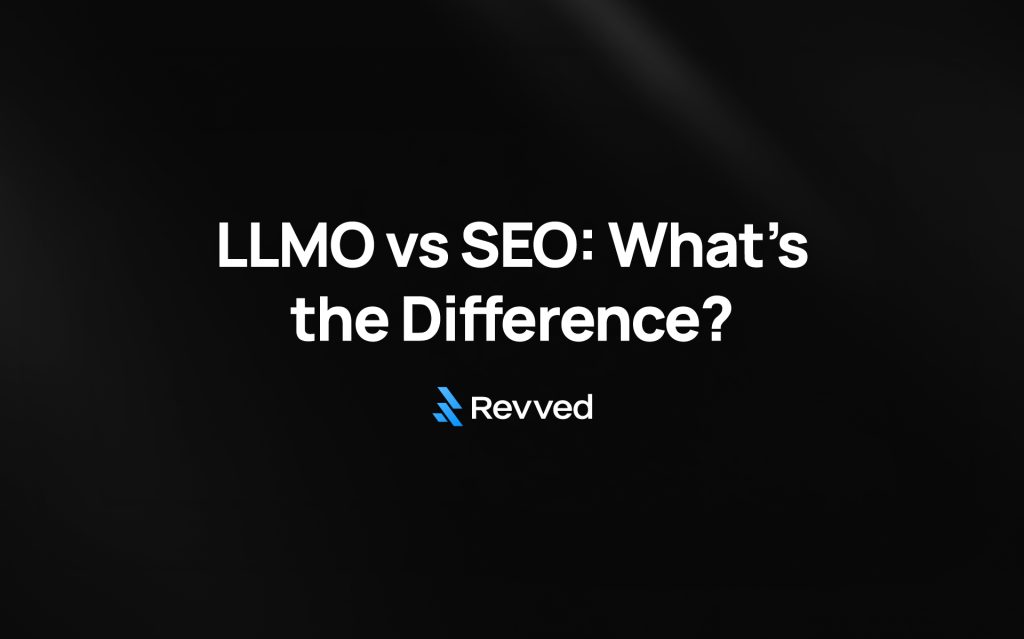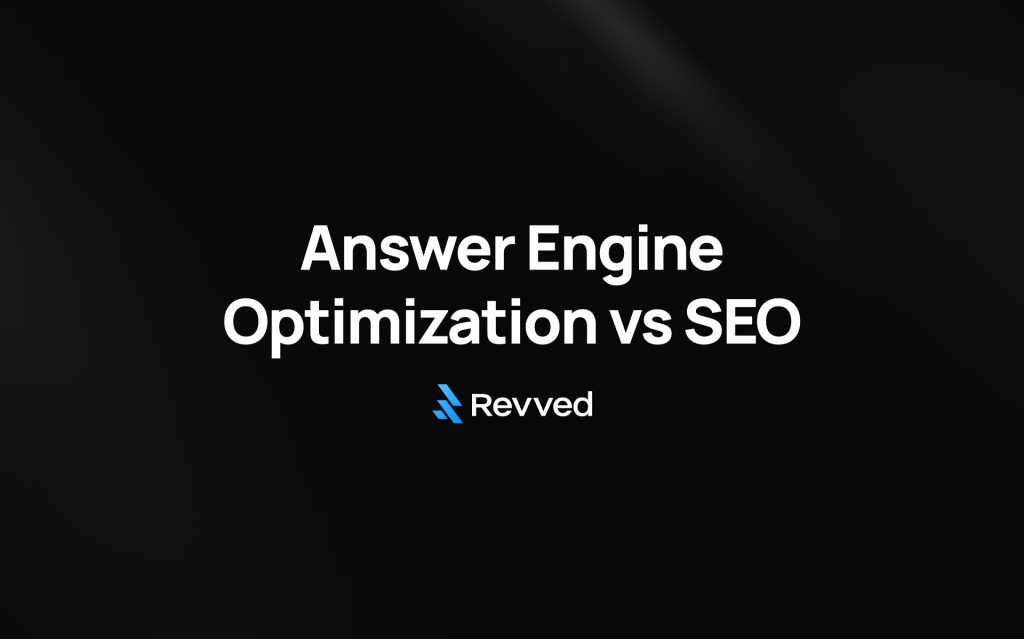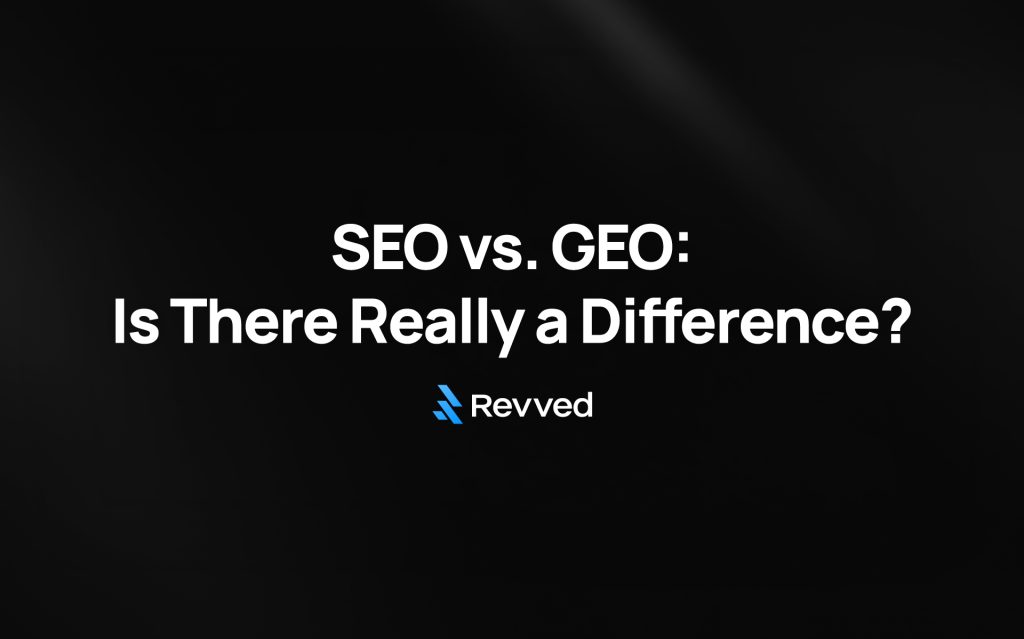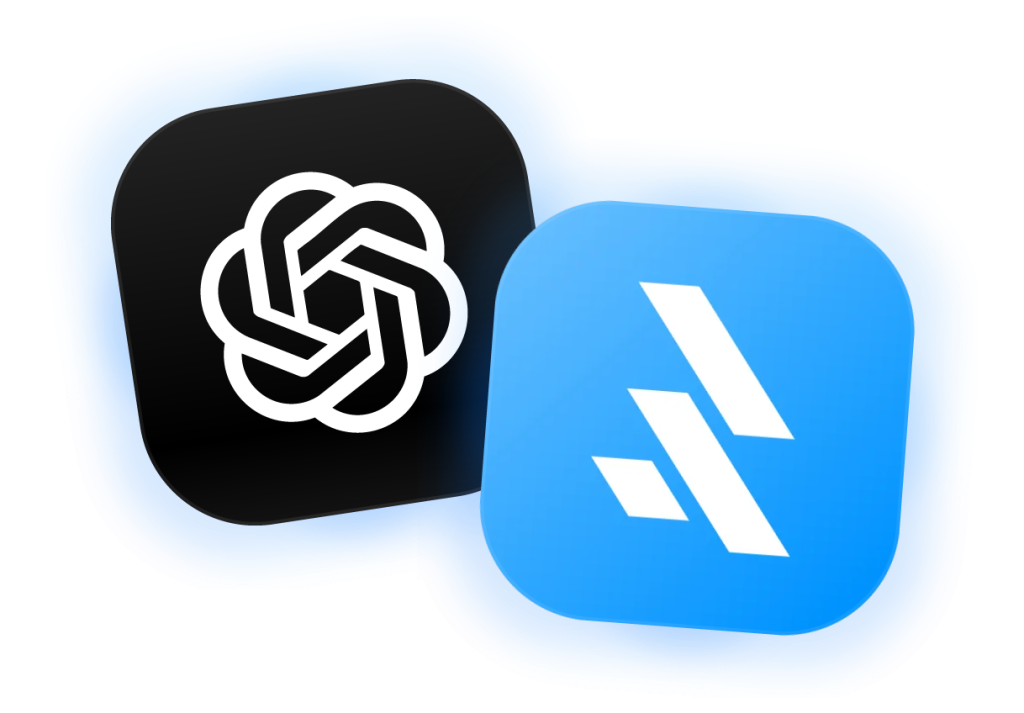
Revved Digital is a local SEO company built for local businesses that just want results without the BS. We help you show up on Google when it matters most: when your customers are searching.
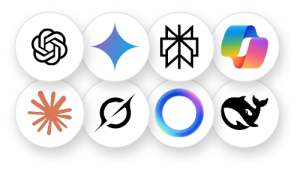
Want to Get Found on Google & ChatGPT?
We can help you reach more customers by optimizing your website for Google and AI search.
Learn more
How the AI visibility Scanner Works:
What the score measures
Your score estimates how likely AI-driven search engines (ChatGPT-style answers, Google’s AI Overviews, Perplexity, Gemini) are to include and recommend your business. We look at six signals that generative engines and local packs lean on:
Google review volume (up to 25 pts, capped at 1,000+): More reviews = stronger public proof. We cap credit at 1,000 since that’s where authority signals tend to plateau.
Average rating (up to 20 pts): Ratings below ~3.0 hurt trust; 4.5–5.0 tells AI you’re a safe recommendation.
Blogging / FAQ velocity (up to 15 pts): Helpful, question-led content gives AI something to cite and summarize.
NAP consistency (up to 15 pts): Matching Name, Address, Phone across major directories helps engines confirm your entity.
Schema markup (up to 15 pts): Structured data (LocalBusiness, Service, FAQ, Reviews) makes your info machine-readable.
Conversion health (up to 10 pts): We consider your current site conversion rate so growth projections aren’t fantasy.
What the calculator does with your inputs
Scores each signal, then combines them into a 0–100 “AI Recommendation Readiness” score.
Estimates uplift in leads if AI engines begin recommending you more often (we tie this to your current leads/traffic so it’s grounded).
Translates uplift into dollars using a conservative average customer value and close-rate assumption (you can adjust these later).
You’ll see three outputs immediately:
Additional Monthly Leads
Estimated New Customers
Missed Revenue / Month
This isn’t a vanity grade. It’s a quick, directional forecast of real outcomes if we move the levers that AI actually uses.
Why This Matters (Especially for Local Businesses)
Search is changing fast. Consumer behavior is already shifting to AI answers:
Traditional search volume is likely to drop ~25% by 2026.
Many sites will feel 50%+ organic traffic declines as AI answers absorb clicks.
79% of consumers say they’ll use AI-enhanced search next year; 70% already trust those results.
ChatGPT has ~180.5M MAUs; Perplexity’s search volume grew ~858% last year.
If you run a local business, you don’t need more “traffic” in the abstract—you need calls, bookings, and foot traffic from people nearby. That’s why we prioritize GEO (Geo-SEO) and AI-SEO: they put you in the answers and the local results that convert.
SEO vs. GEO vs. AI-SEO (Plain English)
Traditional SEO
Goal: rank web pages in blue links.
Tactics: keywords, backlinks, meta tags, long-form posts.
KPI: positions, sessions, CTR.
GEO (Geo-Targeted SEO)
Goal: win the right “near me” and city/service searches.
Tactics: location/service pages, Google Business Profile optimization, local citations, reviews, NAP consistency.
KPI: local impressions, calls, map pack visibility, leads by location.
AI-SEO / GEO
Goal: get included in AI answers and recommendations.
Tactics: entity clarity (schema, NAP, reviews), answer-first content, FAQs, stats and citations, distribution on AI-visible platforms (e.g., Reddit/Quora), keeping content fresh and structured.
KPI: inclusion frequency in AI responses, branded/near-me mentions, assisted conversions.
Shift your mindset from “rank #1” to “be part of the answer.” That’s the core difference.
What Moves the Needle Fast
Reviews & Ratings: push toward 1,000+ total reviews and 4.5+ average. Create frictionless review flows. Respond to every review.
FAQ-style content: answer real questions customers ask. Short, scannable, citeable.
Local entity clarity: bulletproof NAP, consistent categories, robust LocalBusiness schema, service-area clarity, real photos.
Schema everywhere it fits: LocalBusiness, Organization, Service, FAQ, HowTo, Product, Reviews.
Distribute where AIs look: publish summaries/answers where engines find fresh, authoritative conversations (e.g., Reddit, Quora, industry forums).
Keep things fresh: AI favors recent, well-structured, unambiguous sources over stale walls of text.
How Revved Digital Helps
We build a visibility system—not a report treadmill.
AI & Local Foundation
Clean NAP + citations, GBP overhaul, review engine.
LocalBusiness/Service schema, FAQs, services, cities—machine-readable and consistent.
Answer-First Content
High-intent FAQs, guides, comparisons, and process explainers.
Clear headings, lists, tables; statistics and sources AIs can cite.
Distribution to AI-visible surfaces when appropriate.
GEO Coverage
City/service page strategy that avoids duplication and thin content.
Internal linking + entity reinforcement to drive local relevance.
AI-Readiness Monitoring
Track inclusion signals, lead flow, and conversion health.
Iterate monthly: fix what’s ambiguous, expand what’s working.
ROI Reporting (no fluff)
Leads, calls, bookings, revenue projections—tied to changes we implement.
You’ll see exactly which moves drove which outcomes.
What Your Score Tells You (and What to Do Next)
0–39: You’re hard to recommend. Start with NAP + schema and review velocity, then publish 10–15 answer-first FAQs.
40–69: You’re visible but inconsistent. Tighten entity clarity, expand city/service coverage, and keep reviews coming.
70–100: You’re recommendable. Keep content fresh, build topical depth, and widen local footprint.
Use your calculator results to prioritize the next steps. Want us to take it off your plate? We’ll turn this score into a 90-day plan that boosts visibility in maps, organic, and AI answers—without bloated audits or endless strategy calls.
Advantages
Why Your Website's AI Visibility Score Matters for Local SEO and AI Search
AI-driven search is changing how customers find local businesses. Platforms like ChatGPT, Google AI Overviews, and Perplexity are pulling data from trusted signals — not just blue links. If your business isn’t part of the answer, you’re invisible. Your AI Visibility Score shows you where you stand today, but the real value comes from improving it. Here’s how Revved Digital turns your score into measurable growth.
1
Action-Focused AI SEO Insights
Your score isn’t just a grade — it’s a roadmap. By breaking down the exact factors that influence AI SEO ranking (reviews, schema, content cadence, NAP consistency), you can see where visibility is slipping and what changes will generate the fastest return.
- Pinpoint your weakest AI SEO signals holding you back
- Prioritize quick wins that increase inclusion in AI answers
- Translate visibility metrics into real revenue opportunities
2
AI-First Optimization Strategy
Traditional SEO isn’t enough anymore. We align your online presence with how AI search engines, AEO (Answer Engine Optimization), GEO (Generative Engine Optimization), and LLM SEO actually work. These systems reward clarity, consistency, and trust signals.
- Publish answer-first content designed for AI to cite directly
- Implement schema markup for LocalBusiness, Service, FAQ, Reviews, and more
- Strengthen review velocity, average rating, and reputation signals
3
Lead and Revenue Growth Projections
One of the biggest advantages of our AI SEO checker is that it ties your score to tangible business outcomes. We forecast not just visibility but how it translates into leads, customers, and dollars.
- Forecast additional monthly leads if AI engines include you more often
- Quantify missed revenue opportunities tied to your current visibility gaps
- Track ROI with real conversion and customer value data
4
Done-For-You AI SEO Execution
Improving your score doesn’t have to be overwhelming. Once you know your visibility gaps, Revved Digital can turn them into a 90-day execution plan designed to boost both AI and local search visibility.
- Audit and optimize your website, Google Business Profile, and citations
- Build a review engine to drive 4.5+ star ratings and 1,000+ total reviews
- Drive consistent inclusion in Google Maps, organic SEO, and AI-powered answers
You bring the tools, we bring the traffic. Enter your website URL below to kick-start your proposal today.
FAQs
Common questions about AI SEO & Visibility...
Below, we’ve answered the most common questions so you can understand what these new search trends mean, how they affect your business, and how to measure and improve your AI search readiness.
How can I check my AI SEO score?
You can check it instantly using Revved Digital’s AI Visibility Score Calculator. Just enter your business details, reviews, and traffic numbers. In about 60 seconds you’ll see your AI SEO score plus a forecast of missed leads and revenue if you’re not being recommended by AI search engines.
What is the AI Visibility Score, exactly?
The AI Visibility Score estimates how likely AI-driven search engines—ChatGPT, Google AI Overviews, Perplexity, Gemini, and similar systems—are to include and recommend your business when someone searches for your services. It’s not a vanity grade. The score reflects six signals that generative engines and local packs lean on:
Google review volume (0–25 pts, capped at 1,000+) – strong public proof of performance.
Average star rating (0–20 pts) – trust and safety; sub-3.0 harms inclusion odds, 4.5–5.0 helps.
Blog/FAQ velocity (0–15 pts) – answer-first, cite-able content that AIs can summarize.
NAP consistency (0–15 pts) – clean Name/Address/Phone across directories for entity confidence.
Schema markup (0–15 pts) – machine-readable facts (LocalBusiness, Service, FAQ, Reviews).
Conversion health (0–10 pts) – realistic uplift grounded in how your site already converts.
The output is a 0–100 “AI Recommendation Readiness” score plus projected leads, customers, and revenue so you know what improved inclusion could mean in real terms.
What’s the best way to audit my AI SEO readiness?
Start with a scan using Revved Digital’s AI Visibility Checker. The tool scores your readiness for AI recommendations, highlights gaps in reviews, schema, and content, and estimates how much revenue you may be missing. From there, you can either DIY improvements or request a 90-day visibility plan from Revved Digital.
How does the calculator compute the score and projections?
Your inputs are normalized, scored per signal, and combined into a weighted index (0–100). Two things make the projections useful:
Uplift modeling ties discovery gains to your current baseline (monthly sessions and leads). If you already convert 3% of 2,500 visits, we forecast incremental leads using realistic ranges for increased AI inclusion.
Revenue modeling multiplies incremental customers by your average customer value and close rate. We keep assumptions conservative; you can tune values later.
We cap review credit at 1,000 to reduce distortion from outlier counts, scale ratings non-linearly (a 4.9 helps more than a 4.2), credit content cadence only when it’s answer-driven, and treat schema and NAP as entity confidence multipliers. Conversion health moderates fantasy scenarios—great visibility with a weak funnel won’t over-promise.
What is Answer Engine Optimization (AEO) and why does it matter?
AEO is the process of making your business visible inside AI-driven answers, not just in blue links. As platforms like ChatGPT, Google AI Overviews, and Perplexity become mainstream, more users are skipping clicks and relying on direct answers. AEO ensures your business information, reviews, schema, and FAQs are structured so these systems can recommend you confidently.
How reliable are the lead and revenue estimates?
They’re directional forecasts, not fixed guarantees. Accuracy depends on:
Input quality (accurate traffic, lead counts, value per customer).
Seasonality and market dynamics (competitors improving, SERP changes, local demand).
Execution after the audit (reviews, content, NAP, schema actually getting fixed).
We avoid inflated numbers by tying uplift to your current baselines and using conservative bounds. Treat the outputs like a business case: they show missed revenue and the upside if you improve the exact signals AIs use to recommend local businesses.
What’s the difference between SEO, GEO, and AI SEO/AEO/LLMO—and why should I care?
Traditional SEO: rankings for blue links. KPIs: positions, sessions, CTR.
GEO (Geo-targeted SEO): winning local/city/service and “near me” searches via GBP optimization, citations, reviews, service/city pages. KPIs: map impressions, calls, directions, local leads.
AI SEO / AEO / LLMO: optimizing your entity so AI systems include you in answers and “recommended providers.” Tactics: structured data, NAP integrity, review strength, answer-first content, distribution on AI-visible surfaces (e.g., Reddit/Quora/industry forums). KPIs: inclusion frequency in AI answers, branded mentions in AI chats, assisted conversions.
Bottom line: shift from ‘rank #1’ to ‘be part of the answer.’ That’s where discovery is heading.
What are the fastest ways to improve my AI Visibility Score?
Start with the highest-leverage moves:
Reviews and ratings – implement an automated, frictionless review flow; target 1,000+ total and 4.5+ avg; reply to 100% of reviews.
Entity clarity – lock down NAP consistency across top directories; ensure GBP categories, hours, services, and photos are complete and real.
Schema everywhere it fits – LocalBusiness, Organization, Service, FAQ, Product (if applicable), and Reviews. Validate with a structured data testing tool.
Answer-first content – publish short, specific FAQs that address intent directly and cite credible sources. Keep it fresh—quarterly updates beat stale essays.
Distribute where AIs look – repurpose your FAQs/answers to surfaces AIs crawl heavily (select forums/Q&A hubs).
Fix conversion friction – fast pages, obvious CTAs, click-to-call, appointment links, and trust signals near forms. Visibility without conversion wastes the win.
How is GEO different from traditional SEO?
GEO (Generative Engine Optimization or Geo-targeted SEO, depending on context) focuses on two things: being visible in “near me” searches on maps, and being included in AI-driven generative answers. Traditional SEO chases web rankings; GEO blends entity clarity, reviews, citations, and structured local data to make sure AIs and Google Maps list you when someone nearby searches for your service.
Can this help me appear in ChatGPT, Perplexity, or Google AI Overviews?
Yes—indirectly and ethically. None of these platforms sell “paid placement” for local businesses. They elevate entities that are well-defined, trusted, and frequently cited. Your AI SEO checker results show exactly which signals are weak. Improve those, and you increase your odds of being mentioned or recommended when users ask for providers in your category and city.
How to verify progress:
Track referral patterns and branded demand in GA4.
Use AI-mode channel groupings and regex filters to isolate likely AI-assisted traffic (see your GA4 guide).
Run consistent test prompts (city + service + qualifiers) and log inclusion frequency over time.
Monitor GBP insights (calls, direction requests) as leading indicators.
How often should I run an AI SEO / AEO audit?
Quarterly is a good minimum. Run an audit:
After major changes (site redesign, new locations, category shifts).
During heavy review swings (big volume spikes or rating dips).
Ahead of peak seasons (HVAC summer/winter, home services rainy season, etc.).
Multi-location brands should consider monthly spot checks on entity data (NAP/citations/schema) because small inconsistencies multiply at scale and erode AI trust.
What signals do AI search engines look at when recommending businesses?
The biggest factors include review strength and average rating, structured data (schema), NAP consistency, helpful answer-style content, and entity clarity across the web. These are the trust signals that generative engines lean on when deciding which business is “safe” to recommend.
Who is this tool best for—and when should I bring in Revved Digital?
It’s built for local and service-led businesses (plumbers, HVAC, electricians, med-spa/salon, restaurants, gyms, pro services, multi-location brands) that want calls, bookings, and foot traffic—not just pageviews. If your score shows weak entity clarity, thin answer content, or poor review signals—and you don’t have time to fix it—bring us in. We’ll translate your score into a 90-day execution plan:
Clean NAP + citations, GBP overhaul, review engine.
LocalBusiness/Service/FAQ schema, answer-first content, and city/service coverage.
Distribution to AI-visible surfaces and monthly AI-readiness tracking tied to leads and revenue.
